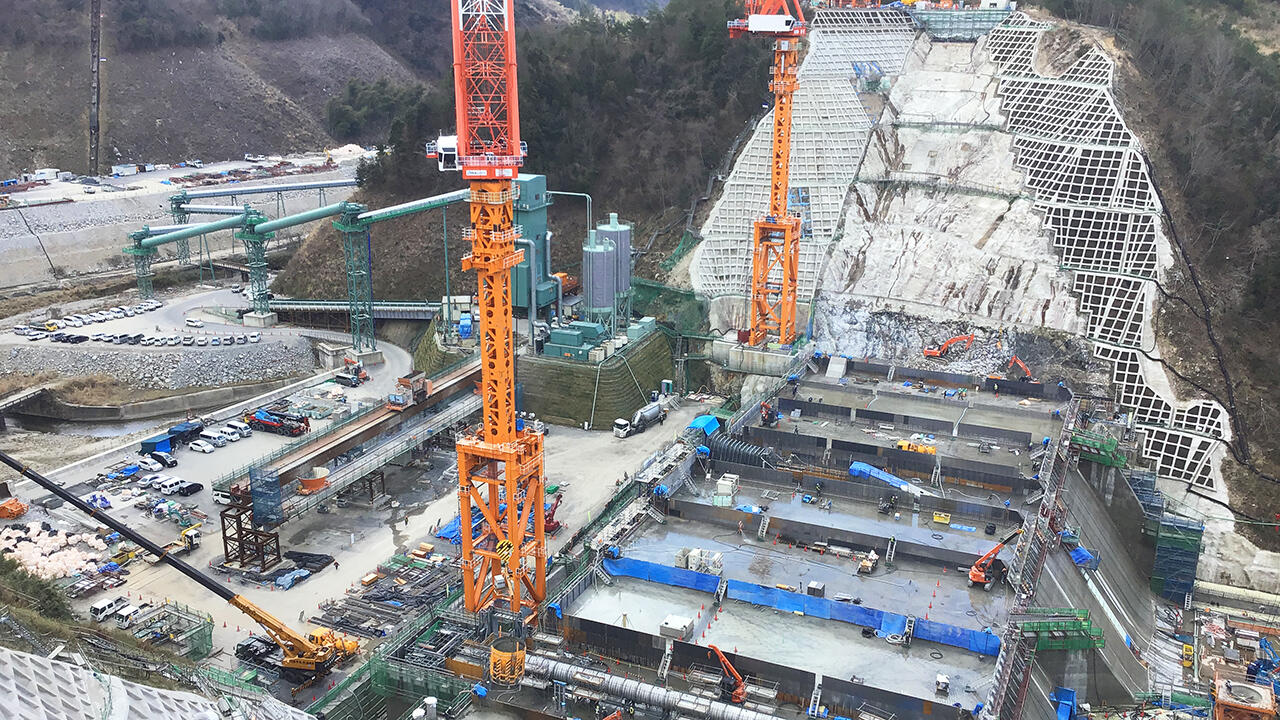Japan is facing a labor shortage: As the country continues to age, with 35 percent of the workforce is over 55, the construction industry is looking towards new ways to fill its widening labor gap (Japan has been relaxing its notoriously strict immigration policy towards lesser-skilled workers, but very slowly). One of those solutions is to automate the workforce, and contractor Obayashi is currently testing whether robots can build an entire dam on their own, according to Nikkei Asian Review.
In the Mie Prefecture off the coast of Honshu (Japan’s largest island), Obayashi has teamed up with competitor Takenaka to build the 275-foot-tall dam autonomously. Dams are by their very nature complicated projects, and Obayashi is maintaining a contingency of human workers on-site to catch any mistakes.
Each step of construction has been automated in some way: A concrete plant for mixing the necessary materials was established nearby, while automated tower cranes (with humans inside for manual overrides) are laying down concrete in 160 square foot sections. If concrete is applied unevenly, robotically-controlled rollers have been employed to periodically flatten and polish the concrete before another layer is deposited. Consistency and quality control are especially important for dams, as the concrete needs to be layered precisely and sealed for waterproofing, or it risks leaking down the line.
As Obayashi has pointed out, despite the technical difficulties, this type of project is actually a perfect testbed for autonomous construction. Dams as a typology are out of the way and far from residences or businesses, and their construction involves long, repetitive concrete layering at every stage. Still, as the firm relayed to Nikkei Asian Review, this automation has only increased productivity on the dam project by 10 percent, in part because of the required workers on site; once the technology is more mature, the company expects that productivity could increase by up to 30 percent.
That’s especially important as Japan is looking at overtime reform for the construction industry that will go into effect in 2024, which will cut down on man hours even further. Completion of the dam is expected in March 2023.
Top image: Computer-controlled cranes are depositing concrete, with humans on hand for quality control. (Courtesy Obayashi)
